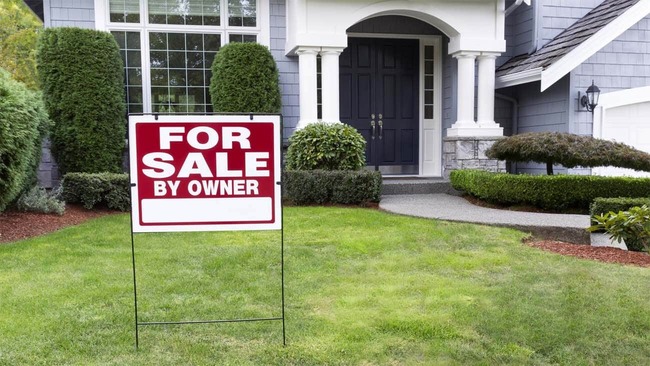Mortgage Payments Explained: Principal, Escrow, and More

A mortgage payment is a significant amount of budget spent each month. Contrary to what you may have thought, it’s more than just a house payment. There are taxes, fees, and other line items that may not be easily understood until undertaking a mortgage. They are relatively easy to see, though.
Mortgage payment line items
Take a look at your mortgage statement. Do you see a breakout of charges? Here's what you can expect:
Mortgage principal
The money owed to pay your loan balance. This is explicitly based on the amount of money borrowed and does not include interest.
Interest
A percentage charged to the loan balance as repayment to the lender.
Escrow balance
Escrow is money set aside so a third party can pay property taxes and homeowners’ insurance premiums on your behalf. Why? Each month, homeowners are required to pay a portion of their estimated annual costs, including principal and interest. Current law permits a lender to collect 1/6th (two months) of the estimated annual real estate taxes and insurance payments at closing. After closing, you will remit 1/12 of the annual amount with each monthly mortgage payment. So, your statement will include a line item — “escrow” which states just how much you owe for that month.
According to the Real Estate Settlement Procedures Act (RESPA), your minimum escrow balance should equate to twice your monthly escrow contribution. You can expect your lender to increase your monthly mortgage payment if there are insufficient funds in your escrow account to cover property taxes and homeowners insurance (or you can pay the shortage in a lump sum). Additionally, you may receive an escrow balance refund soon after a loan payoff.
Estimated escrow
What is estimated escrow? It's pretty much an approximated monthly cost of your homeowners insurance and property taxes. You should be able to find this information under "Projected Payments" on your Loan Estimate Guide.
Bills and fees covered by escrow include:
You may also see the following terms on your mortgage statement. The fees or charges that align with these terms are almost always set aside in an escrow account.
Property taxes
Here we are talking about property taxes, which are owed by you — the homeowner. Each monthly mortgage payment will include 1/12 of your annual property tax bill. Those monies are often kept in an escrow account, which is further defined below.
Homeowners insurance
If you see the general term “insurance” on your statement, it’s referring to hazard or homeowners’ insurance. You’ll make an initial year’s worth of payments before closing, as part of your closing costs. This insurance will cover you against losses related to your home structure, like fire or hail damage. Going forward, and similar to taxes, a lender will collect 1/12 payment each month to cover ongoing premiums which are included in your mortgage payment. The homeowners insurance company is then typically paid twice per year from the accumulated balance in the escrow account.
Mortgage insurance
As far as mortgage insurance goes — that’s dependent on the loan program and the amount of down payment you made. If you put less than 20% down or are using an FHA loan, expect mortgage insurance fees to also live on your statement. It’s purpose: to protect the lender against losing its investment.
Keep in mind your lender should receive copies of your tax and insurance bills so they can pay them out of the escrow funds collected. You should not be making payments directly to a tax or insurance agent — specific to property taxes, homeowners’ insurance, and mortgage insurance.
Key takeaway:
Escrow helps borrowers by evenly spreading insurance and tax expenses over 12 payments instead of one lump sum. Let’s assume your yearly property taxes are two payments of $1,000 each, and your annual insurance is $600. If you paid these directly, it would mean $2,600 a year. With escrow, though, you can expect to make smaller, monthly payments of $217.
Next, let’s breakdown different stages within your mortgage repayment schedule.
Start: Understanding arrear payments
Unlike most loans, mortgage principal and interest are paid in arrears — or paid after interest is accrued. So, when buying a home, your first payment is due at the beginning of the first full month after closing. If you close on April 10, your first payment is not due until June.
However, when you close on your mortgage loan, the lender will collect interest on all remaining days of the month you close. If you close on the 15th of a 30-day month, there will be 16 days of interest collected — the number of days remaining in the month, including the 15th. This ensures all payments are the same amount. The closer you are to an end of month closing, the less interest you owe that month (since interest is prorated by day).
Key takeaway:
As you likely expected, you eventually pay all of the interest that's due — neither more nor less. If you’re in need of lower closing costs, you can discuss seller concessions with your realtor or assistance programs with your mortgage lender.
Duration: Home loan amortization
An amortization schedule is how your mortgage lender calculates your monthly payments. Since you are being charged interest over the duration of your loan, your monthly mortgage payment has to be divided among the principal balance and interest. To do this, the lender looks at the original loan balance after your last payment and calculates the amount of monthly interest owed vs. the amount applied toward the principal.
Let’s consider an example of a $200,000, 30-year conventional mortgage at 4% interest (for illustrative purposes only). You’ll notice the sum of the principal and interest payments always equals $955, but disbursement of dollars varies based on how far along you are with repayment.
After a year of mortgage payments, 31% of your money starts to go toward the principal. You see 45% going toward principal after ten years and 67% going toward principal after year 20.
Over 30 years you'll pay a total of $343,739, again based on an estimated monthly mortgage payment of $955.
Key takeaway:
The more you pay toward the principal, the higher the amount of equity you gain. Equity is a significant asset that is often taken advantage of via a home loan refinance. In this example, equity grows at a slower pace. But keep in mind — many loan programs amortize differently. That’s why it’s imperative to discuss your financial goals with your loan officer during the mortgage process. There are many ways to refinance a mortage down the road into something better, but waiting until then may not always be the best path. Finances are tricky. Talk it through with someone who does this for a living.
Additionally, making additional principal payments can save on interest or change the payoff schedule. Use an extra mortgage payment calculator to see how your mortgage might change with extra payments.
Find: First Time Home Buyer Classes & Education near you
End: Payoff vs. principal balance
As you approach the end of your loan term, inching closer to being mortgage-free, it becomes time to settle your balance. Your outstanding principal — as shown on your mortgage statement — is not the total amount needed to pay off your loan. This is because interest will accumulate up until the day your loan closes. And, there may be other fees you’ve incurred but not yet paid, such as late fees, deferred interest, hazard/flood insurance, etc. Bottom line — expect a balance that’s higher than your principal balance. This is what’s called a payoff amount or payoff quote.
Key takeaway:
The easiest way to determine your payoff balance — call your mortgage servicer. It’s far easier and more accurate than doing the math yourself. You can request a payoff quote that will illustrate what needs paying before the loan is resolved. Just know that payoff quotes have expiration dates, and some servicing companies may even include a charge to have your payoff faxed or emailed to you. If you do not pay your account in full before the quote expiration date, your payoff amount will change.
Homeownership is exciting, especially as you get closer to owning a house that’s free from a mortgage. But the overall term is lengthy — usually no shorter than 15 years, and often closer to 30 immediately after a home purchase. A lot can happen during that timeframe. If questions arise during the loan repayment or payoff process, never hesitate to speak with your Mortgage Consultant. It’s essential for you to understand mortgage payment structure, as well as refinance options that may lower monthly payments.




